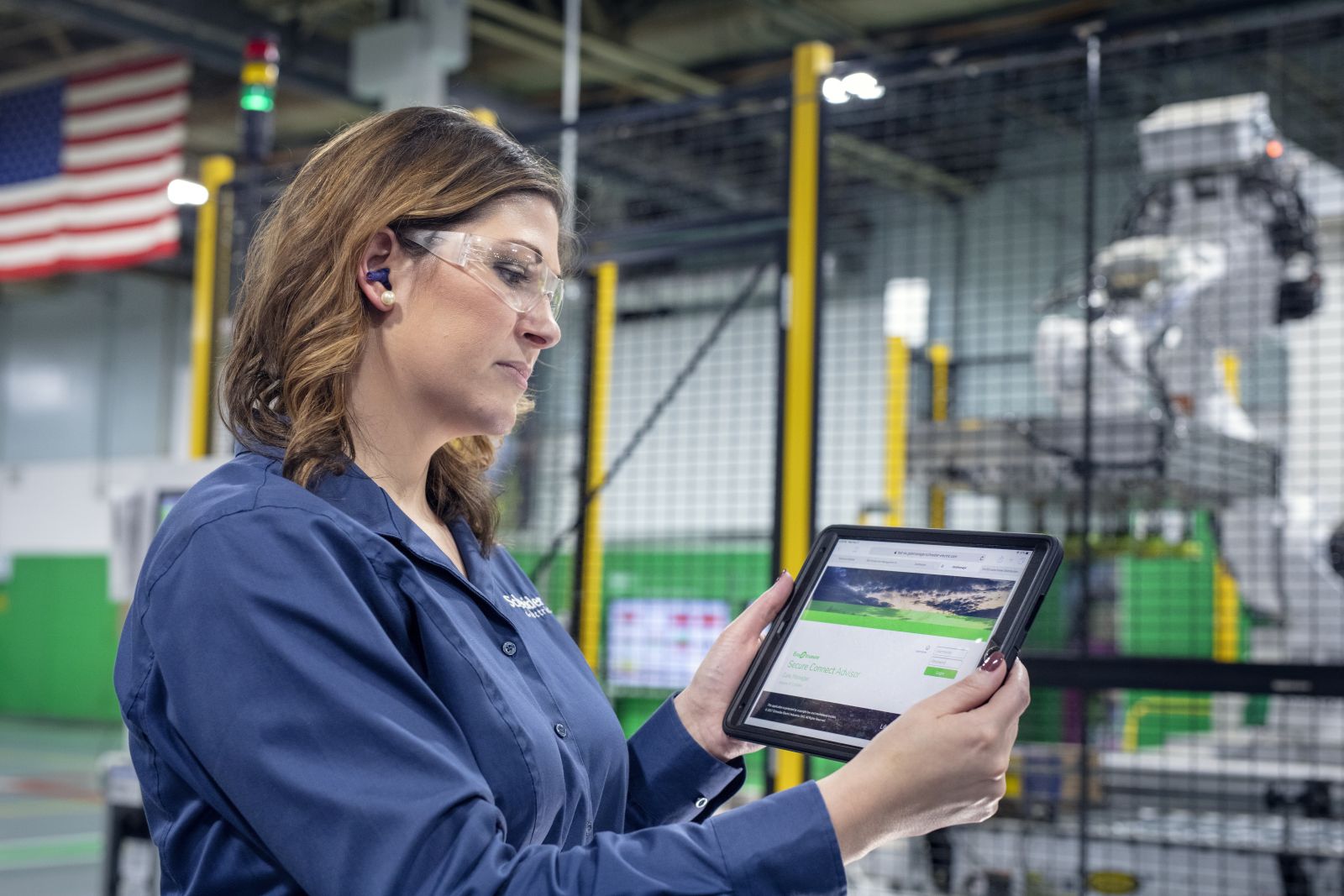Navigating the Era of Disruption with Digital Infrastructure Solutions
If the past few years taught us anything, it’s that disruption is the new normal. Whether it’s supply chain interruptions, new COVID-19 variants, changing cybersecurity attack vectors, or increasingly unpredictable and more damaging extreme weather, the barrage of challenges and threats facing businesses is – unfortunately - here to stay.
To solve these challenges and successfully navigate this new era of disruption, organizations need to move beyond piecemeal solutions. Regardless of industrial sector, now is the time for companies to take bold measures and implement holistic solutions built on secure, next-generation technology that’s flexible enough to address current operational factors and any new curveballs thrown their way.

The rise of automation technologies enabled the development of Industry 4.0, a new phase of the Industrial Revolution that leverages automation and machine learning to help create more efficient and productive work environments in sectors like manufacturing. These technologies provide increased connectivity and real-time data, enabling organizations to make better decisions and see solutions to existing problems that were previously unfathomable.
Companies need to prioritize creating a modern workplace with the newest technology and automation systems to optimize facility operations. Many companies who brought operations up to Industry 4.0 levels are realizing the benefits of digital infrastructure solutions that deliver data-driven business intelligence, and enhance operational and financial performance.
Also key to achieving benefits of the next generation industrial environment is incorporating and supporting underlying technology infrastructure designs that prioritize an interoperable system, data driven software-based automation, and the integration of energy and automation.
In the fast-changing world of industrial automation, companies must focus on implementing innovative technologies to gain a competitive advantage and better position themselves as a leader in their marketplace. A recent Deloitte surveyfound that, while nearly 100 percent of industry executives understand the urgency of a digital transformation, only 14 percent are highly confident in their company’s ability to implement it.
There are three key benefits organizations can achieve by integrating industrial automation technology with their manufacturing infrastructure:
- Remote Management Access
Gone are the days of facility managers having to do it all by themselves. Digitizing facility controls and machines enables remote management capabilities that provide data-driven insights. Through system sensors and monitors, users can aggregate data into insightful and actionable reports to inform decisions on operational or business changes.
- Shorter and Fewer Downtimes
Preventive maintenance is key to avoiding downtime, which can be costly in terms of both profits and reputation. Industrial automation systems can monitor operations and alert users in real-time of potential issues, enabling professionals to inspect the situation before it escalates.
- Reduced Energy Spending and Consumption
Facility managers are constantly asked to look for new ways to optimize operations to cut spending and reduce energy consumption. Industrial automation software is an easy way to address both by providing managers insight into daily operations, giving them a holistic view of where to implement efficiencies and optimize energy usage.
While the manufacturing industry is pioneering adoption of digital technologies and IoT-based applications, others are more reluctant to implement such innovation, either due to older workforces with less digital expertise or skepticism surrounding the need to improve current operations. No matter the reason, it’s time to look past that and update internal systems to better protect companies and customers.

Companies cannot afford to stay in an analog world; adopting digital infrastructure solutions are critical to help securely navigate ongoing disruptions. However, digital modernization and automation comes with risks and potential vulnerabilities that organizations need to understand and mitigate.
Bad actors have long targeted U.S. utilities, but with cyberattacks on the rise and showing no signs of slowing down, companies need to proactively work to safeguard potential areas of vulnerability. The increased targeting of critical infrastructure means sectors that don’t have mature cybersecurity programs, like water and wastewater, are finally taking concerted efforts to better protect themselves, including leveraging intel and best practices from the federal government and utilizing more security processes and technologies.
That holistic approach to cybersecurity – addressing people, processes, and technologies – is crucial. Given the growing IT-OT convergence, it’s more important than ever that organizations adopt flexible, vendor-neutral solutions for the most effective security. Digital infrastructure solutions can’t alleviate all issues for companies, but the system can be a mitigating force.
An essential factor in boosting security is addressing the people – every employee has a role to play, and leadership needs to create a culture of cybersecurity so it’s taken seriously. This starts with establishing a set list of security policies, guidelines and practices for employees to understand.
All team members – even those in positions that traditionally didn’t require a cybersecurity briefing – should be regularly briefed on both company cyber policies and best security practices. It only takes one employee to accidentally click on a phishing email and infect their network, so all employees need to fully understand their role in helping sustain a secure and protected network.
The bottom line is that our industrial sector cannot afford to sit still. The new era of disruption is here to stay, and digital infrastructure solutions hold a major key to business resiliency and sustainability. Adopting next-generation digital infrastructure solutions can help better protect, and even future-proof, company operations by staying ahead of threats in whatever form they take.
Michael Martinez is Foxboro DCS Leader, Schneider Electric, which integrates world-leading process and energy technologies, end-point to cloud connecting products, controls, software and services, across the entire lifecycle, enabling integrated company management, for homes, buildings, data centers, infrastructure and industries.
Schneider Electric | www.se.com
Author: Michael Martinez
Volume: 2022 May/June








